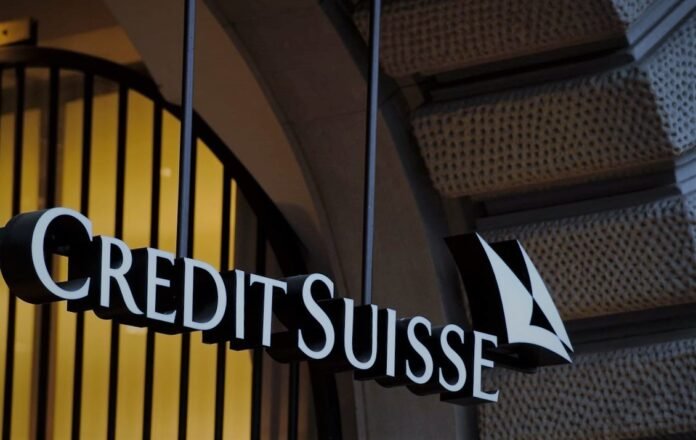Tumultuous Times: Banking Sector Tremors Reverberate Through Credit Suisse Shares
A Foreboding Atmosphere Engulfs Global Markets
As an ominous air descends upon global share markets, persistent fears of a banking crisis cripple investor confidence despite authoritative attempts to reestablish stability. Friday saw European and American indices flounder, with the beleaguered Swiss financial behemoth, Credit Suisse, experiencing an accelerated sell-off.
Credit Suisse: A Tidal Wave of Investor Apprehension
Drowning in an 8% plunge, Credit Suisse’s shares tumbled. Concurrently, the United States witnessed First Republic’s shares nosedive by 33%, hot on the heels of a cash infusion from the nation’s most prominent banks. The FTSE 100’s conclusion? A descent exceeding 1%.
With bated breath, European and American exchanges closed at a loss. The Dow Jones Industrial Average followed suit, plummeting 1.2%. The Nasdaq and S&P 500 were not immune, succumbing to the downward trend.
A Glimpse into Credit Suisse’s Financial Abyss
Earlier this week, Credit Suisse’s confession of “material weakness” in its financial reporting rattled investors to the core. Compounding the issue, Saudi National Bank, the Swiss lender’s largest shareholder, declared further financial injections unattainable.
The beleaguered and persistently loss-making firm received an emergency £45bn lifeline from the Swiss National Bank. However, concerns over the bank’s viability persist. A staggering $466m exodus from Credit Suisse’s European and US managed funds occurred in recent days, as reported by financial services titan, Morningstar.
Morningstar’s analysts Niklas Kammer and Johann Scholtz opined that Credit Suisse’s woes were “idiosyncratic in nature and we believe containable for now even in a worst-case scenario.” Yet, they acknowledged the rapid pace of development, cautioning that “views we form today may be stale tomorrow.”
Unraveling the Global Banking System: A Domino Effect?
Credit Suisse’s tribulations – impacting around 50,000 employees globally, with approximately 5,000 in London – coincide with the collapse of two US lenders: Silicon Valley Bank (SVB) and Signature Bank. Consequently, apprehension surrounding the banking system’s health surges.
US regulators intervened, ensuring SVB and Signature Bank customers retained full access to their funds, attempting to thwart escalating panic. Despite these measures, skepticism lingers regarding the vulnerability of other banks, such as San Francisco’s First Republic, to potential deposit withdrawal frenzies.
First Republic’s shares plummeted nearly 70% within the week. The 11 US banks providing support declared that their actions demonstrated “confidence in the country’s banking system.” US financial officials commended the move, praising the “resilience of the banking system.”
Inflation and Rising Borrowing Costs: A Dangerous Combination
Global central banks have aggressively elevated borrowing costs to combat inflation’s rapid ascension. Consequently, the bond portfolios amassed by banks during periods of low rates have suffered, contributing to Silicon Valley Bank’s downfall and sparking questions regarding the fate of other institutions.
SVB Financial Group, Silicon Valley Bank’s parent organization, sought bankruptcy protection to facilitate the sale of residual assets. Jeffrey Cleveland, chief economist at US asset manager Payden and Regal, warned of potential collateral damage: “There could be other vulnerabilities… if central banks are intent on continuing to raise interest rates.”
Cleveland elaborated, stating, “Historically when that happens, we do see fragility, we do see problems in the financial system.” Prior to the banking sector turbulence, the US Federal Reserve and the Bank of England had anticipated further interest rate hikes at upcoming meetings. However, recent events have fueled speculation that these rate increases might be diminished or even abandoned.
On Thursday, the European Central Bank (ECB) proceeded with its own interest rate hike, raising rates from 2.5% to 3%. The decision further intensified the scrutiny surrounding the global banking system and its capacity to weather these tumultuous times. As the financial landscape shifts, investors and regulators alike must remain vigilant and adaptive in the face of uncertainty.
Google News | Telegram
















